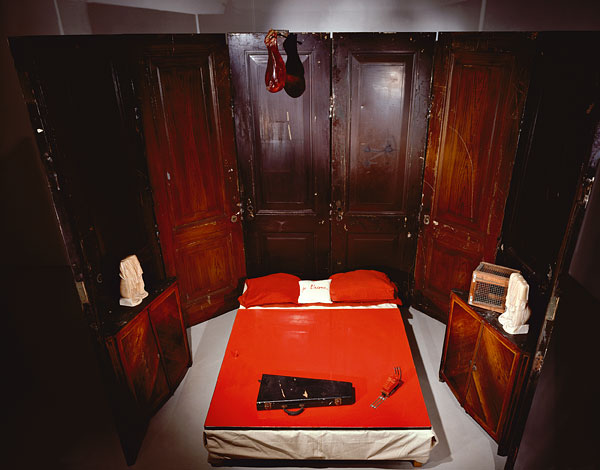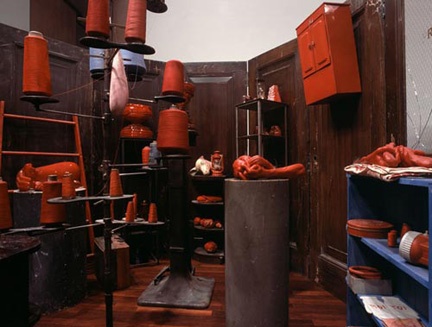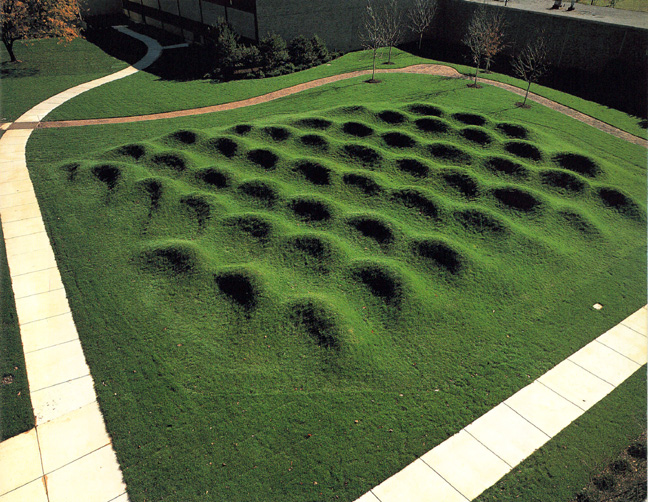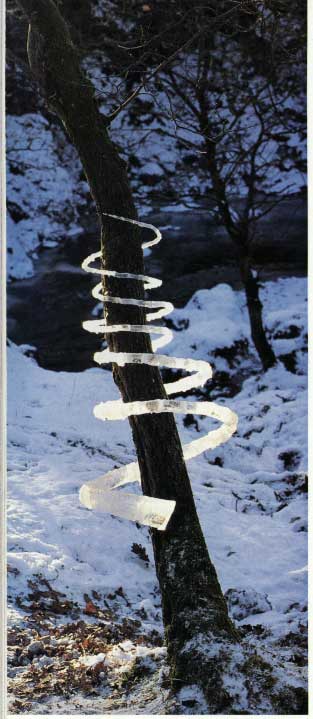Sculpture Studio Portfolio (SP10)
/Caitie Harrigan
Project 3: Site, Place, and Installation
ANALYSIS
type or paste text here
Installation and site-specific artwork is a term that categorizes a myriad of ideas for art pieces. These artworks’ themes explore a meaning that specifically has to do with its environment and/or have a dialogue with its particular surroundings. This is a very broad concept and therefore includes a multitude of art pieces and artists, so the easiest way to explore it is by attempting to form subsets and look at examples. The most general way to break it down is by distinguishing between artworks that create their own environment from those that directly respond to an existing space.
What does it mean for an artwork to be directly involved in a space or create its own space? A marble bust on a pedestal would not be an example of this; the piece has nothing to do with any environment it is placed in, and it is easily interchangeable among spaces, never altering its meaning. If the marble bust was attached to a wall of the room, at a specific angle looking at a viewer or facing the ceiling, that would be a step closer to installation work: it is having a dialogue with its space because of its particular and unconventional placement in the room, which would create a new meaning besides just the bust itself. Building a small space the size for a single person to stand in, placing the bust at an angle high on the wall, and adding a red light, for example, would be an installation piece: the environment created for the bust directly has to do with its meaning.
This example characterizes work that creates a specific space for its meaning, such as the rooms of Louise Bourgeoise. For example, her Red Room (1994), involved building a space that would recreate memories from her childhood; or, a distortion of a memory that would become a reality once literally constructed as a palpable space. A viewer would not be able to experience the artist’s childhood memory as distinctly as being in that space if instead the artist had chosen to place photographs of the rooms on the wall. By creating rooms that the audience can see and experience as a 3-D space, which a viewer associates with a real, solid, tangible space, Bourgeoise is allowing each audience member to get a glimpse inside of her own memories and feelings about those memories in a different way than by looking at a photo or drawing or even reading a description.
Red Room, Red Room (Child) (1995)
Not a huge distinction but an important one, another specific type of installation artwork is one that directly targets a space that already exists, or site specific. One type of this involves adding an artwork to a specific place that works to maintain or emphasize a certain aspect of that space. For example, Maya Lin was commissioned to do a work for the land in front of the aerospace engineering building of the University of Michigan. To create something that would really connect with its location, Lin interviewed the engineers who worked there to find out what they were studying and what they were interested in. As a result, Lin decided to create a sculpture of the Stokes Wave by building hill-like shapes to mimic those waves. In the context of the university, The Wave Field (1995) speaks as a tangible creation of these waves, a symbol of something that the people working there would be able to understand and identify with. Taking it out of that space and placing it somewhere like a city, it would just seem like a cluster of bumps with no significant meaning behind it.
The Wave Field (1995)
A similar approach to an artwork that directly involves certain space is one that creates an artwork out of something that already exists there, such as the nature-based artwork of Andy Goldsworthy. Goldsworthy creates sculptures in the wilderness out of nature, such as ice sculptures or sphere-like objects built out of rocks by the shore side. These works are very literally site specific, as they are not moved out of the environment they were created in, only documented by photography or film, and are altered or ultimately destroyed by nature itself.
Another example of site-specific artwork that creates an artwork out of something already existing in that space is the art of Gordon Matta-Clark, specifically his building cuts. These involved Matta-Clark searching for a house that he would be able to alter by means of cutting pieces out of—often houses that had an set date of when they would be demolished, so Matta-Clark got an “okay” to create his impermanent sculpture. These building cuts, such as in Splitting (1974), created sculptural objects out of houses: in Splitting, Matta-Clark literally split the building in half by cleaving it down the middle so it opened in a V-shape. Not only was the house changed into a sculpture, but also the house became a specific space inside as a person walked through it—an artwork that created its own space.
Work of Andy Goldsworthy
Splitting (1974)
All of these artworks are examples of the wide range of work that falls under the term of installation or site-specific work. The important thing is not that installation work involves installing a work in a unique way, but that the meaning directly corresponds with the space in which it is placed or created. And without that space, the artwork would change in significance or be meaningless.
Back to Index
This page was last updated:
April 5, 2010 2:28 PM






